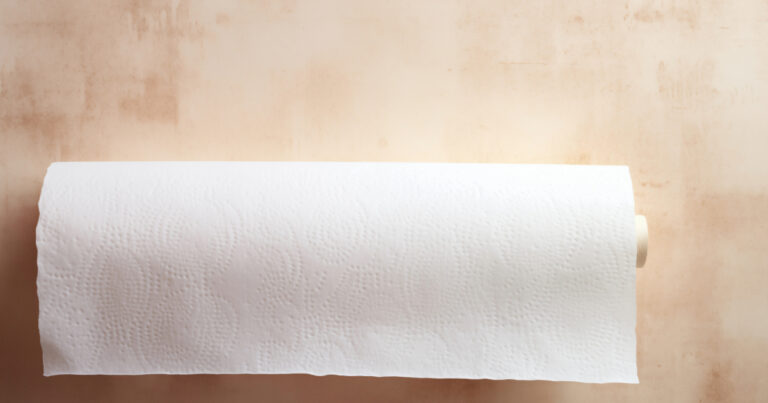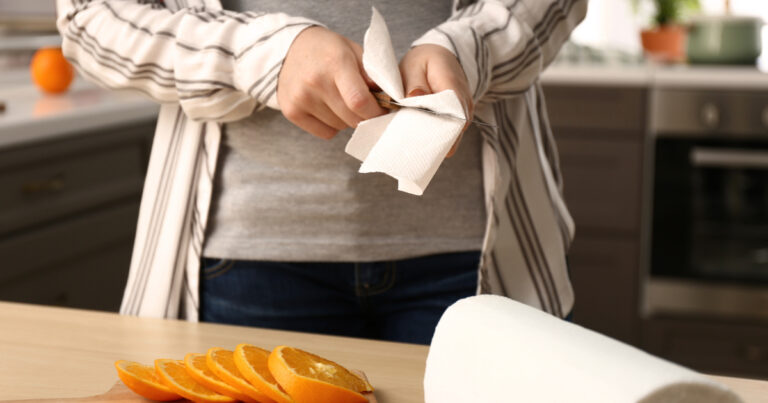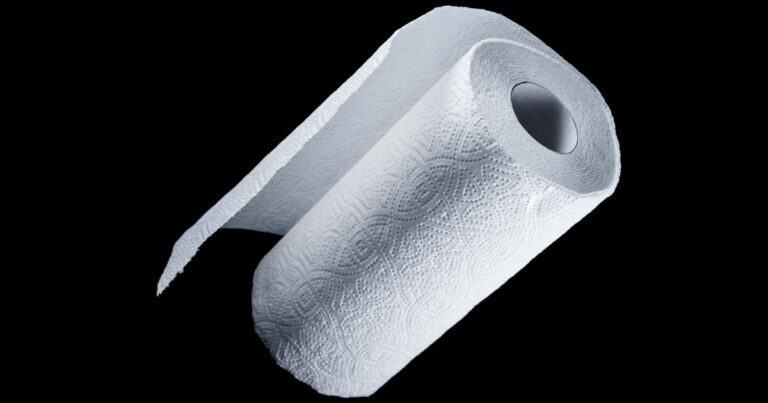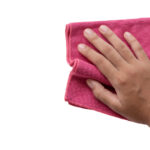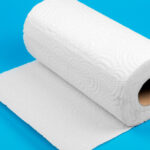Paper towels have become an indispensable household item for cleaning up spills, drying hands, and wiping surfaces.
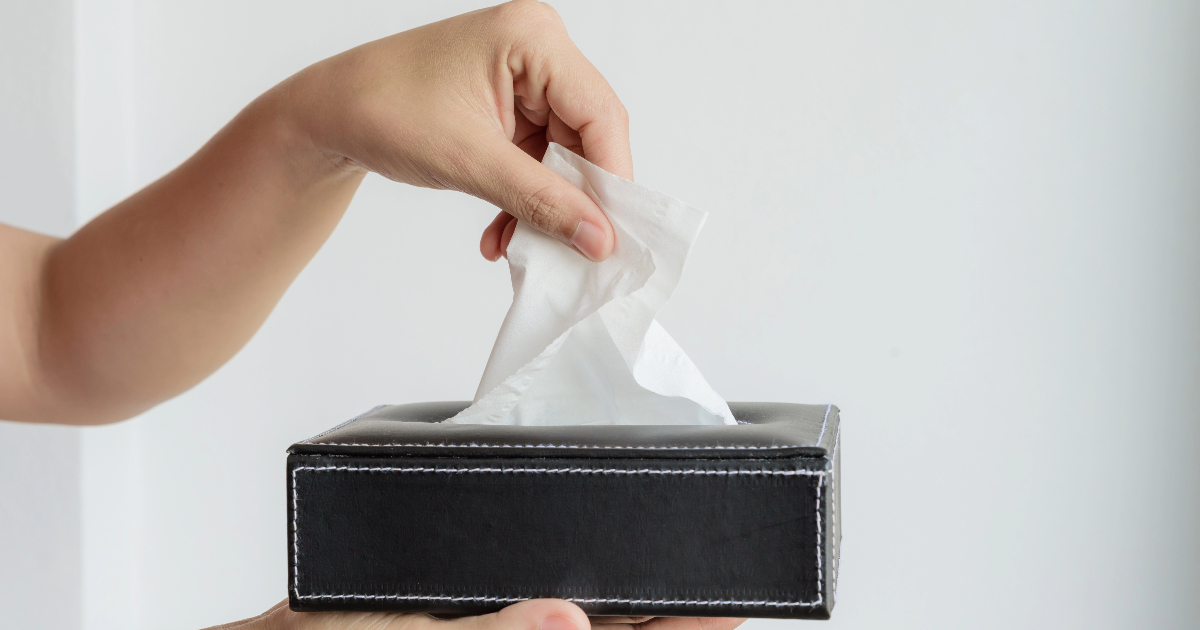
But have you ever wondered – what are paper towels made of?
A Brief History of Paper Towels
Before paper towels, people used cotton towels and linen rags to clean and dry. This led to the spread of germs and disease. The origin of paper towels goes back to 1907 when the Scott Paper Company in Philadelphia introduced paper tissues as a more hygienic alternative to cloth towels.
Initially produced for medical use, Arthur Scott soon realized their wider potential. In 1931, he launched the first paper towels under the Scott brand for household kitchen use. Its usefulness and disposable nature made it a hit, and paper towel production took off. Soon after, other brands like Bounty entered the market, and paper towels became the ubiquitous household item it is today.
Raw Materials – From Tree Pulp to Paper Fiber
The basic raw material for making paper towels is wood pulp from trees. Both hardwoods (like oak, maple, etc.) and softwoods (like pine, fir, spruce) are used. The main steps are:
- Trees are harvested and debarked. The wood is chipped into small pieces.
- The wood chips undergo a churning and boiling process along with water, chemicals, and other additives to separate the fiber strands and create a watery slurry.
- This wet slurry or pulp contains both wood fibers as well as fiber from recycled paper. Recycled pulp reduces the need for virgin tree pulp.
- The pulp may also contain alternative fibers like bamboo for increased sustainability.
Paper Towel Manufacturing Process
Converting the wet pulp into a finished paper towel roll involves several steps:
1. Cleaning and Refining the Pulp
The pulp contains impurities so it needs to be cleaned and refined. It goes through the following stages:
- Screening: The pulp is passed through screens to remove contaminants and make it smoother.
- Bleaching: Chemicals like chlorine, peroxide, and ozone are used to bleach and whiten the pulp.
- Refining: The cleaned pulp is beaten to a uniform consistency and passed between rollers to press the fibers closer together.
2. Adding Functional Chemicals
Some chemicals are added to give the paper towels useful properties:
- Wet strength resins like polyamide to prevent the sheets from falling apart when wet.
- Softeners to make the paper smooth and absorbent.
- Dry strength additives to make the sheets tougher when dry.
- Coloring to give the paper towel a attractive look.
3. Sheet Formation
The pulp flows onto a moving mesh screen. As the water drains, a wet mat of interlocked fibers is formed. This mat is pressed between rollers to remove excess water and consolidate the paper web.
4. Drying
The pressed mat passes over heated cylinders to evaporate the remaining water and turn it into a dry paper sheet.
5. Calendering
The paper is passed through polished metal rollers known as calendars to further smooth and compress it.
6. Embossing
The paper sheets are embossed between rollers engraved with patterns like diamonds, dots, etc. Embossing creates protruding bumps which increase thickness and absorbency.
7. Ply Bonding
For 2-ply paper towels, two embossed sheets are joined using adhesives like latex. The adhesive also attaches the towel to the cardboard roll core.
8. Perforating and Folding
The paper is perforated at regular intervals and folded into stacks or rolled into individual towels on a core.
So in a nutshell, that’s how wood pulp gets transformed into a finished paper towel through cleaning, layering, pressing, drying, embossing and perforating.
Key Takeaway: Paper towels are made through a multi-step process involving refining wood pulp, adding chemicals, forming sheets, drying, embossing, and perforating.
What Makes Paper Towels Absorbent?
Paper towels need to absorb water and liquids to be effective for cleaning. The key factors that make them absorbent are:
- Cellulose fibers: Paper towel cellulose fibers contain lots of hydroxyl groups. This gives them a high affinity for water molecules through hydrogen bonding.
- Fibrous structure: Paper towels have loosely bonded and randomly aligned fibers with large void spaces. This allows water to easily penetrate the sheet and get trapped between the fibers.
- Embossing patterns: Embossing creates protruding bumps and dents on the sheet surface. This provides a high surface area and open pockets for moisture absorption.
- Thicker sheets: More fibers translate to higher absorption capacity. So 2-ply towels absorb more than 1-ply ones.
- Wet strength resins: Chemical binders prevent excess swelling and rupture of fibers on wetting. This maintains the fibrous structure and absorption capacity.
So paper towels absorb through their hygroscopic fiber structure as well as the topographical features created by embossing the sheets. Choosing the right fiber blend and embossing method optimizes the absorbency.
Main Materials: Wood Pulp, Plant Fibers, Paper Recycling
As we’ve seen, paper towels are primarily made from plant fibers obtained from trees as well as recycled paper. Here’s some more on the main materials:
Wood Pulp
Wood pulp forms the bulk of the fiber content. Both hardwoods like maple, oak, birch as well as softwoods like spruce and pine are used. Softwood pulps generally have longer fibers that impart strength. Hardwood pulps are shorter and give softness, smoothness, and bulk.
Recycled Paper
Using recycled paper like old cardboard and newsprint reduces the reliance on fresh tree pulp. It also gives a use to waste paper that would otherwise end up in landfills. Recycled pulp is often bleached to remove ink residues and get a whiter color.
Alternative Plant Fibers
Some eco-friendly brands use alternative plant sources like bamboo, hemp, straw etc. for their fiber content. Being fast growing crops, these are more sustainable than wood. However, wood still offers superior softness and performance.
Additives
A variety of functional chemicals like wet strength resins, dry strength agents, and softeners are added in small quantities to modify the paper properties.
Key Takeaway: The main materials used to make paper towels are wood pulp, recycled paper, alternative plant fibers like bamboo, and papermaking additives.
Understanding Ply and Sheet Thickness
Paper towel sheets come in different thicknesses quantified by the number of plies:
- Single ply: Consists of a single thin paper sheet. More economic but less absorbent.
- 2-ply: Two thin sheets stacked and bonded. More absorbent. Standard thickness.
- 3-ply: Three thin sheets bonded. Very absorbent but more expensive.
- Ultra: 2 very thick sheets giving a textured feel. Highly absorbent.
Within the same ply, absorbency can be varied by altering the basis weight i.e. grams per square meter. A higher basis weight means a thicker sheet for the same ply. It provides higher wet strength and absorption capacity.
The Manufacturing Process In Depth
We’ve seen a broad overview of paper towel manufacturing. Now let’s get into a bit more detail on the key steps:
Finding the Right Fiber Blend
Paper towels contain 80-100% virgin wood pulp. To optimize product qualities, different pulps are blended:
- Long softwood fibers like Pine for strength
- Short hardwood fibers like Aspen for softness
- Recycled fibers to reduce costs
- Alternative fibers like bamboo for sustainability
The pulps must be refined to unwind the fibers from the wood matrix. Beating and pressing develops flexibility by fraying and fibrillating the ends. The right blend results in strong yet soft sheets.
Water Removal Process
The pulp suspension is only 0.5-1% fiber. To make paper, over 99% water must be extracted. This is done in 3 stages:
- Sheet formation: On the moving mesh screen, fibers interlock as water drains to form a wet sheet.
- Wet pressing: Pressing between rollers squeezes out more water.
- Drying: Evaporating remaining water on hot cylinders.
With efficient dewatering, the energy-intensive drying step is minimized.
Surface Touch Through Calendering
The paper surface is smoothed by calendering between metal rollers. High temperatures and pressures polish the sheet. Soft nip calenders use a soft roller against a hard one. Supercalenders have alternating hard-soft rollers. A friction-treated soft calender imparts a sueded texture. Through calendering, paper can get a wide range of finishes from smooth to textured.
Embossing and Roll Structure
Embossing rollers engraved with patterns imprint raised bumps and indents on the paper. Common motifs are diamonds, dots, grids, etc. This adds bulk and increases absorbency.
Embossing combined with correct ply bonding gives the quilted appearance of Scott® and Bounty® towels. It creates open pockets that rapidly soak up spills.
Optimizing Strength and Softness
Paper towels need to be strong when wet but also soft for gentle cleaning. This requires the right balance between fiber bonding and fiber flexibility.
- Excessive bonding makes sheets hard and brittle.
- Low bonding causes pilling and linting.
Chemical debonders reduce inter-fiber bonding to improve softness. Dry strength aids counter the weakening to maintain wet strength.
Improving Water Absorbency
Absorbency depends on the structure and degree of bonding between fibers:
- Loose, flexible, high surface area fibers improve water uptake and retention.
- Overly compacted sheets resist water penetration.
- Resins and embossing maintain openness without compromising wet strength.
Superabsorbent materials are sometimes added to boost water holding capacity.
Paper Towel Composition by Major Brands
Now let’s look at what goes into some popular paper towel products:
Bounty
- Made from virgin softwood and hardwood pulps for strength and softness.
- 2-ply sheets quilted together for high absorbency.
- Embossed with repeating diamond patterns to trap moisture.
- Wet strength resins prevent tearing of wet sheets.
Bounty Duratowel
- Uses 65% recycled pulp, rest virgin pulp.
- Highly absorbent and durable 100% recycled paper towels.
- Lint-free cleaning for glasses, screens etc.
Viva
- Ultra-soft 1-ply paper towel with unique cloth-like texture.
- Deeply embossed with waved lines for absorption.
- Uses curly chemical wood pulp for high wet strength.
- Lint-free and durable when wet.
Brawny
- 2-ply paper towel with absorbency rivalling Bounty.
- Embossed with dense dot patterns to hold moisture.
- Made from virgin wood pulp for strength.
- Good value brand with high sheets-per-roll.
Marcal
- Leading 100% recycled paper towel brand.
- Made from post-consumer recycled paper.
- 2-ply sheets quilted together.
- Uses no chemicals or inks for a green product.
Key Takeaway: Popular paper towel brands use a mix of virgin wood pulp, recycled paper, alternative fibers, and functional chemicals tailored to the product strength and absorbency.
Factors Affecting Paper Towel Strength
Though made of paper, paper towels need to be quite strong, especially when wet. Here are some ways their strength is optimized:
Fiber Properties
Long softwood fibers resist pulling apart under tension. They provide a reinforcing effect like rebars in concrete. Selecting the right virgin pulps enhances strength.
Fiber Bonding
Strength depends on how fibers bond and entangle with each other. Beating and refining promotes fibrillation which increases bonding. Wet strength resins also reinforce bonds.
Basis Weight
Heavier paper with higher fiber density is stronger simply because more load-bearing material is present per unit area.
Calendering
Calendering compacts and presses fibers together. The friction smooths the surface and increases fiber-to-fiber bonding.
Dry Strength Additives
Wet strength resins maintain wet strength but reduce dry strength. Dry strength agents counter this effect for toughness in use.
For a given fiber composition, strength is a trade-off between bonding and flexibility. The right balance prevents sheets from being either too brittle or too linty.
Choosing Sustainable Paper Towels
With paper towels being a daily use commodity, it helps to make sustainable choices. Here are some ways to identify eco-friendly paper towels:
- Recycled content: Choose brands made from post-consumer recycled paper like Marcal.
- Alternative fibers: Bamboo and hemp-based towels reduce tree use like Caboo.
- Eco-labels: FSC, Green Seal, and EPA certifications indicate sustainability practices.
- Elemental chlorine-free: Opt for ECF rather than fully chlorinated bleaching if possible.
- Fewer additives: Avoid BPAs, fragrances, andexcess chemicals.
- Zero packaging: Reduce plastic use by buying in bulk without individual wrapping.
- Reusable towels: Consider more durable reusable options like linen and microfiber.
Making informed choices keeps your cleaning green. Balance performance, price, and ecological impact when picking paper towels. An occasional tree-free towel is a step to sustainability.
Key Takeaway: Choosing paper towels made from recycled paper, eco-friendly plant fibers, minimal processing, and green certifications reduces environmental impact.
FAQs
Are paper towels really made of paper?
Yes, the primary component of paper towels is cellulose fiber derived from wood pulp, recycled paper, and other plant sources. This gives them the fundamental paper-like properties.
Why is wood pulp used instead of cotton?
Wood pulp has very long fibers that interlock to create a strong absorbent sheet structure. Cotton and cloth fibers are too short and smooth for making a porous, papery product.
How does embossing help absorbency?
Embossing introduces protruding bumps and dents in the paper. This provides surface area and open voids that allow water to penetrate and get trapped within the sheet.
Why are oil and grease hard to clean with paper towels?
Being nonpolar, oil and grease are repelled by the cellulose which is polar. So paper can only absorb oily liquids by trapping them within its voids rather than through direct adhesion.
How many trees does it take to make paper towels?
On average, about 17 trees are required to produce a ton of paper towel which is around 380 rolls. Newer toweling can use as much recycled content as possible to reduce tree use.
Are paper towels compostable?
Most paper towels are compostable in municipal facilities. But many use wet-strength resins that retard breakdown. For backyard composting, look for unbleached or additive-free towels.
Conclusion
Paper towels have become an essential household cleaning product due to their convenience and hygienic properties.
Knowing more about what goes into making the paper towels we use every day helps us appreciate this product as well as use it wisely.


